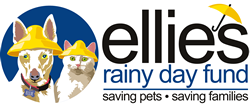Dog Bloat
Have you ever heard of bloat? Medically known as Gastric Dilation and Volvulus syndrome (GDV), it is a life-threatening condition that primarily affects large, deep-chested dogs and some cats. Commonly called bloat or torsion, this condition occurs when your pet’s stomach fills with gas, food, or fluid, sometimes even twisting. The stomach expands against other organs and can result in a lack of blood flow to the heart or stomach lining, a tear in the stomach wall, and difficulty breathing. Though the causes aren’t often known, the signs symptoms are. Knowing them could save your pet’s life!
There are a handful of factors that come into play with this condition such as genetics, anatomy, and possibly environment. Dogs are much more likely to suffer from bloat. Large and giant breeds such as Great Danes, St. Bernards and Standard Poodles are at a higher risk than small dogs such as Chihuahuas or Pomeranians. And, although there have been reported cases of GDV in puppies, the risk increases dramatically with age. Possible behaviors increasing the likelihood of GDV may be ingesting too much water or food at a time or too much activity shortly after eating. Whether or not behavioral/environmental factors play a role is debated within the veterinary community.
So what are the symptoms of GDV? They can include such things as dry heaves, excessive drooling, abdominal pain, pacing, distended (bloated) stomach, anxious behavior, rapid heart rate, labored breathing, restlessness, inability to lie down. Most or all of these symptoms are enough to take your pet to the veterinarian, but any combination of them should spark a more immediate trip to get them checked out. If you suspect your dog or cat is suffering from GDV, seek veterinary help IMMEDIATELY! (If you’re unsure, call an emergency clinic and ask if the signs are consistent with bloat).
Confirming GDV is usually as simple as an abdominal x-ray and urine test. However, treating it is where things get tricky… GDV is an emergency condition and will most likely require surgery and aftercare with the vet’s team.
After initial diagnosis and treatment, it will still be very important to observe your pet for any additional symptoms, make sure they are getting enough water to combat the effects of diarrhea and vomiting, give them a bland diet, and restrict activity as long as your vet recommends.
As frightening as this all sounds, if you believe your pet may be at risk some veterinarians recommend doing the following:
- Avoiding the use of a raised bowl to feed or water your pet, unless your vet recommends it
- Feeding your pet smaller meals throughout the day instead of one or two large ones
- Making sure your pet drinks consistently throughout the day and never a large amount at any one time
- For dog breeds that are already predisposed to GDV, your vet may recommend tacking down their stomach while they’re getting spayed or neutered.
As always, a conversation with your vet can provide you with a lot of valuable information and they can let you know if your dog is one of the breeds that’s often pre-disposed to such a condition. For in-depth information, check out:
Bloat in Dogs: What It Is, the Symptoms, and Treatment
Signs and Symptoms of Bloat in Dogs
Bloat in Dogs Cats: Causes, Signs, Symptoms
